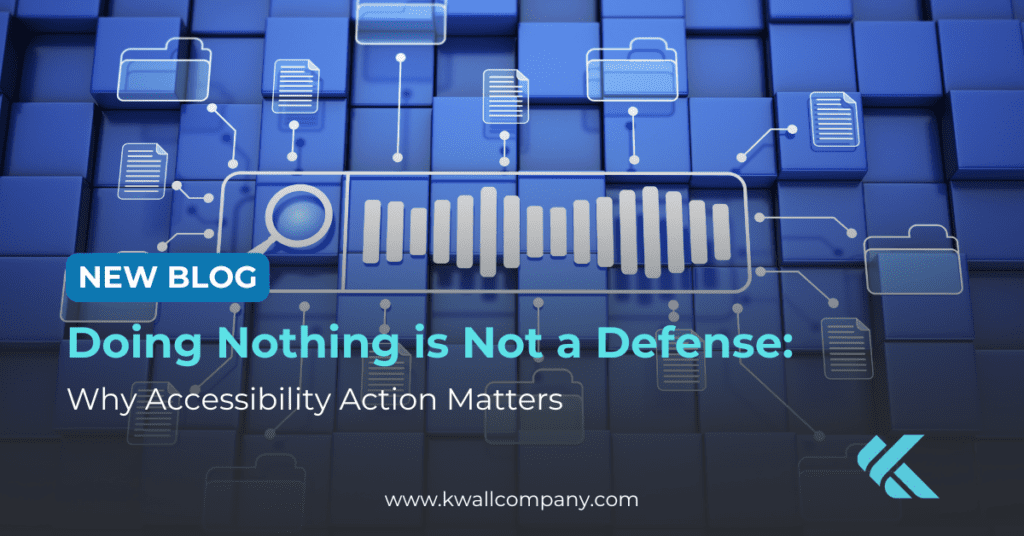
In today’s digital-first world, the accessibility of your website or digital platforms isn’t just a nice-to-have—it’s a necessity. For organizations across industries, especially in sectors like higher education, government, and public services, doing nothing is not a defense. Take action to improve accessibility and ensure that every user, regardless of ability, can engage with your content, services, and brand. Why accessibility action matters has never been more clear—it’s about inclusion, compliance, and creating a better experience for everyone.
Yet, despite growing awareness, many institutions still find themselves stuck in a dangerous limbo: inaction. Whether it’s due to fear of cost, lack of clarity on where to start, or underestimating the importance, “doing nothing” when it comes to accessibility is never the right choice.
Why Doing Nothing Is a Risk
Ignoring accessibility not only alienates a significant portion of your audience—it also puts your organization at legal and reputational risk. Digital accessibility lawsuits are on the rise, and courts are increasingly ruling in favor of users who are denied equal access to digital content.
Even more importantly, inaction sends a message: that inclusivity isn’t a priority. In a time when equity and user experience are front and center, that’s a message no organization can afford to send. Take action to improve accessibility by starting small, and you’ll demonstrate your commitment to inclusivity while reducing risk.
Start Where You Are—Start Small
The good news? You don’t need a full-scale overhaul to begin improving accessibility. What matters is starting. Whether it’s running an accessibility audit, implementing alt text on all your images, or reviewing your site’s color contrast, small steps add up quickly.
What’s more, showing that you’re taking any steps toward improvement often goes a long way in demonstrating intent and reducing legal exposure.
Accessibility Is a Journey, Not a One-Time Fix
A key part of reducing risk and creating a more inclusive experience is having a plan—not just for now, but for the future. Accessibility should be treated as an ongoing commitment, not a project with an end date. This includes:
- Regular audits and updates to catch issues as standards evolve.
- Training for your team so accessibility becomes part of your content and design culture.
- Clear documentation of your progress and roadmaps, so you can demonstrate improvement when needed.
Demonstrate Progress, Build Trust
Not only does proactive accessibility work reduce legal risk—it builds trust with your community. Showing that you’re working toward a more inclusive experience reflects your organization’s values and commitment to serving everyone equally.
Don’t Wait—Start Now
The most important step you can take for accessibility? The first one. No matter how small, it signals progress and opens the door to long-term impact. In the end, doing something—anything—is infinitely better than doing nothing. Because in digital accessibility, inaction is never the answer.
Ready to Make Accessibility a Priority?
Don’t wait for risk to find you—take the lead in creating an inclusive, compliant digital experience. Contact us today to learn how your institution can take smart, strategic steps toward accessibility improvement, reduce risk, and create a better experience for every user.



